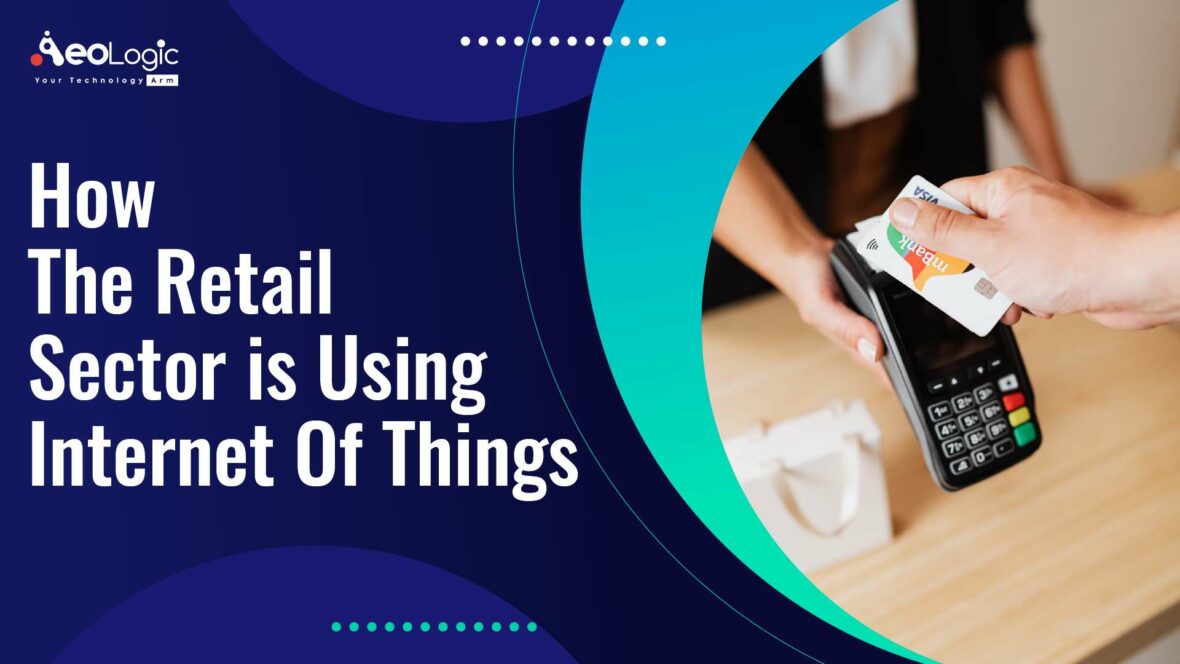The IoT is reforming retail businesses. The expansion of IoT technology in retail is expected to exceed $35 billion by 2022. Retailers are using IoT technology to improve customer services and performance. If you work in retail, IoT technology can help you in several ways. The Internet of Things is playing a critical role in the retail industry. In this blog, we will look at how the retail sector is using IoT.
Let’s Explore!
Significance of IoT in the Retail Sector
With the rise of IoT, the retail landscape is changing in a big way. With 70% of retailers believing that IoT will have a big impact on how they do business in the future, this is a good thing. There are a few trends that will help the retail sector.
Automation
IoT will make it easier to do things that are still done manually. Smart price tags adjust pricing in real-time based on the item’s popularity. It also includes the expiration date and other considerations. Customers will use their phones to get around the store and make digital shopping lists.
An Agile workforce
An agile workforce will allow the retail industry to work together in ways like crowdsourcing and short-term partnerships. As a result, its workers will become more mobile. Hence, workforce development will also improve. With the rise of IoT, webinars are now accessible to anyone, at any time.
Tracking consumers purchase
Occupancy sensors can give important information about how people move around a store and how long they stay in certain parts of the store. Retailers can plan In-store merchandising and guided selling with this data. Retailers can use this information to set up more effective displays, aisle layouts, and space allocation. Also, retailers can use this data to keep an eye on checkout and line wait times. Hence, more staff or more self-checkouts can help in improving customer service.
Keeping track of assets
Retailers can use wireless IoT sensors to track things like shopping carts and baskets on the ground. There are a lot of things that can go wrong with retailers, from theft to time-consuming retrieval. Shopping carts cost stores anywhere from $75 to $250 each. So keeping them safe is very important. When a cart goes too far, IoT sensors can show where it is and lock the wheels automatically. This stops people from stealing and makes sure there are always enough shopping carts for people who come into the store.
Personalized Shopping
Also, retailers use IoT devices to make shopping more personalized for people. For example, Bluetooth beacons can send alerts to a smartphone in real-time based on how close a customer is to them. Alerts like these can make people think about going into a store and taking advantage of the deal. Also, they can let people in the store know about personalized discounts, special events, or other things. Furthermore, retailers can use this location data to show personalized messages on nearby digital displays or to send salespeople to areas where customers are hanging out. It will make the overall customer experience better.
Managing facilities
One of the most important things for retailers to do on a daily basis is to keep the storage area clean, comfortable, safe, and appealing. Many IoT technologies can help speed up these tasks and cut down on the costs that come with them.
Retailers can use people-counting and presence-detection data to figure out which parts of a store are people are using more and which parts less. As, how they are using in-store washrooms and changing rooms. This can help in managing disinfection and cleaning schedules. Facility managers can also use wireless IoT sensors to watch when consumable supplies are running low at the store’s entrances and throughout the store. This helps them keep an eye on inventory and make sure of quick supplies.
Advantages of IoT in Retail
The advantages of IoT for retail, in general, seem encouraging. Let’s look at the benefits of using Internet of Things technology in retail.
- IoT allows retailers to optimize in-store layouts through past reports. Retailers use IoT sensor data of item interactions and consumer movements in-store.
- Retailers can find curious customers about a product. They use IoT cameras, sensors, and face recognition algorithms for the same. Thus, Employees can help them get the products they desire.
- IoT allows retailers to utilize IoT to keep track of how many items are in stock. These technologies reduce the possibility of human error.
- The Internet of Things helps to improve inventory traceability and visibility. Hence lowering damage, loss, fraud, and theft.
Conclusion
I hope you gained some insight into how the retail sector is utilizing IoT. The main point is that IoT is on the cusp of altering how stores function.
Finally, in the coming years, every retailer will embrace the technology. Also, see how IoT improves product handling and supply chain management. Thus, increasing customer satisfaction.
FAQ’s
What is the estimated global market value of IoT in Retail?
The global IoT in Retail Market will increase at a CAGR of 19.6 percent during the forecast period. From USD 14.5 billion in 2020 to USD 35.5 billion by 2025.
Which region has the highest rate of development in the retail IoT market?
APAC will have the biggest development potential in the IoT in the retail market during this period. This expansion will be in the region’s continuous smart city initiatives as well as the rapidly falling cost of sensors.






